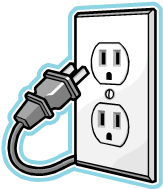Smart Plugs? – or not?

According to data collected by the National Fire Protection Association (NFPA) every year in North America 82,500 major electrical related fires are reported - an additional 890,000 fires go unreported!
Current safeguards, like your breaker/fuse panel, Arc Fault Circuit Interrupters (AFCI), Ground Fault Circuit Interrupters (GFCI) and child shock protectors, provide adequate protection, but not enough, according to Inventor John La Grou.
La Grou’s SafePlug invention has been billed by some as the next generation in residential and commercial electrical delivery. It promises to prevent deadly accidents like house fires -- and to conserve energy by making the electrical systems in our homes “smart”. It is a technology that combines microprocessors in power outlets and RFID tags in electrical plugs.
TED’s (Technology, Entertainment, Design) talk website has generated much open discussion about this new brand of electrical fault circuit interrupters: the cost involved in replacing receptacles; the concept that safety devices often don't produce a real increase safety because they induce people to behave in a more risky way; whether it would be better suited to businesses and hotels; whether the automation provided by a smart receptacle might be more consistent and effective for only a limited number of homeowners.
And of course, the big issue: whether the government should pass a regulation that imposes every outlet use a technology such as this - with a few hundreds patents and owned by one company!
|